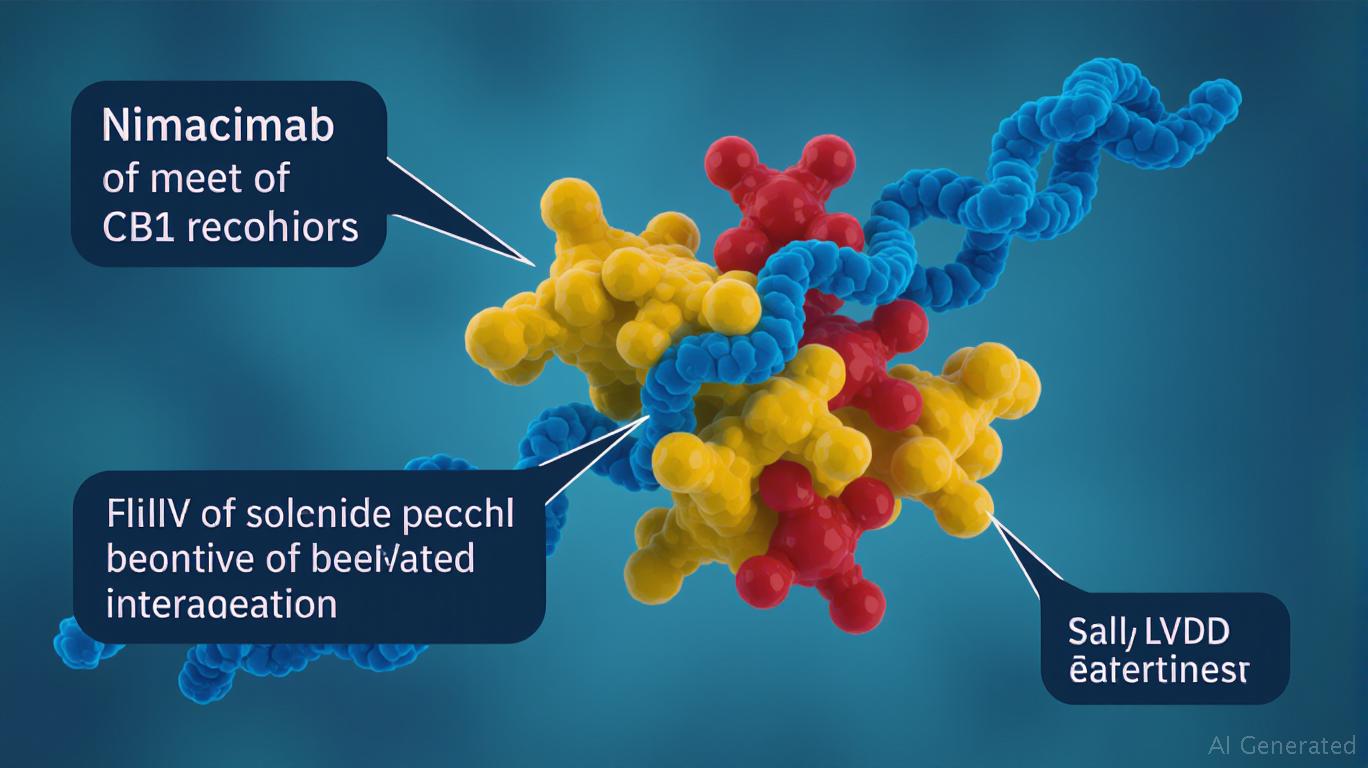Skye Bioscience's Nimacimab: A Transformative Approach to Obesity with Multi-Faceted Potential
The global obesity market, projected to exceed $20 billion by 2030, is in urgent need of therapies that go beyond the limitations of current treatments. Among the emerging contenders is
Bioscience's nimacimab, a peripherally restricted cannabinoid receptor type 1 (CB1) inhibitor designed to address obesity while avoiding the neuropsychiatric risks of earlier CB1 drugs. As the company prepares to report Phase 2a data in late 2025, nimacimab's unique mechanism, robust preclinical results, and synergy with leading GLP-1 agonists position it as a potential game-changer in a crowded but underserved space.The CB1 Paradox: Overcoming Historical Safety Concerns
The CB1 receptor has long been a target for obesity therapies, but its role in the central nervous system has been a double-edged sword. Small-molecule CB1 inhibitors like rimonabant achieved weight loss but caused depression, anxiety, and other neuropsychiatric side effects, leading to their withdrawal from the market. Nimacimab, however, is a monoclonal antibody engineered to bind CB1 receptors exclusively in peripheral tissues. This peripheral restriction—greater than 99% exclusion from the brain—differentiates it from predecessors.

Preclinical studies underscore this advantage. In diet-induced obesity (DIO) mice, nimacimab achieved 23.5% weight loss, comparable to tirzepatide (a GLP-1/GIP agonist) and monlunabant (another CB1 inhibitor). Crucially, it avoided behavioral changes linked to brain CB1 inhibition. This safety profile, coupled with its efficacy, sets the stage for a therapy that could complement—or even outperform—existing options like Wegovy® (semaglutide).
Synergy with GLP-1 Agonists: A Dual Pathway Strategy
The synergy between nimacimab and GLP-1 therapies is a key strategic advantage. In preclinical trials, combining nimacimab with tirzepatide resulted in over 30% weight loss, outperforming either drug alone. This dual approach targets two critical pathways: GLP-1's role in appetite suppression and CB1's influence on energy balance and lipolysis.
Skye's Phase 2a trial (CBeyond™) explicitly tests this combination, enrolling 120 patients across four arms, including a group paired with Wegovy®. If the trial confirms these preclinical benefits, nimacimab could become a preferred add-on therapy in a market where 30-40% of patients fail to achieve sufficient weight loss with GLP-1 agonists alone.
Clinical Catalysts and Financial Fortitude
The near-term catalyst for investors is the Phase 2a top-line data expected in late Q3/early Q4 2025. This trial, which has already passed three safety reviews without incident, will report on weight loss, metabolic parameters, and safety. Positive results could validate nimacimab's profile as a best-in-class obesity drug with a clean safety profile.
Financially, Skye is well-positioned. As of Q1 2025, it held $59.2 million in cash, sufficient to fund operations through Q1 2027. While R&D spending rose to $7.2 million (up from $1.9 million in 2024), this reflects accelerated clinical activity. The company's anatomy of progress video series and participation in high-profile events like the ADA conference signal strategic momentum, building investor and physician awareness ahead of data readouts.
Market Opportunity and Investment Thesis
The obesity market is ripe for innovation. While GLP-1 agonists dominate, they leave a significant population of patients unresponsive or intolerant. Nimacimab's peripheral mechanism and combination potential create a direct path to this unmet need. Analysts estimate peak sales of $1.5–2 billion for nimacimab, assuming a 10-15% share of the global obesity drug market.
For investors, the risk-reward calculus is compelling. A positive Phase 2a result could revalue SKYE's stock significantly, potentially tripling its current valuation if the data aligns with preclinical promise. Even a partial success could open the door to partnerships, as pharma giants like
or seek to bolster their obesity portfolios.Risks to Consider
No clinical trial is without risks. The Phase 2a could reveal unexpected side effects, or the combination with GLP-1 agonists might not deliver additive benefits. Regulatory hurdles, though mitigated by nimacimab's safety profile, could also pose challenges. Investors should also monitor Skye's cash burn and potential dilution if follow-on financing is needed.
Final Analysis: A High-Potential Bets Ahead of Data
Skye Bioscience is at a pivotal moment. Nimacimab's preclinical data and mechanism suggest it could redefine the obesity treatment landscape, particularly for patients where GLP-1 therapies fall short. With a clean safety profile and a well-designed Phase 2a trial, the company is poised to deliver a catalyst that could unlock substantial value.
For investors with a tolerance for biotech risk, SKYE presents a compelling opportunity to capitalize on an underpenetrated market. A buy rating is warranted ahead of the Q3/Q4 data readouts, with a strong upside if the trial meets or exceeds expectations. The obesity space is crying out for innovation—and nimacimab could be the answer the market has been waiting for.
Sign up for free to continue reading
By continuing, I agree to the
Market Data Terms of Service and Privacy Statement

Comments
No comments yet